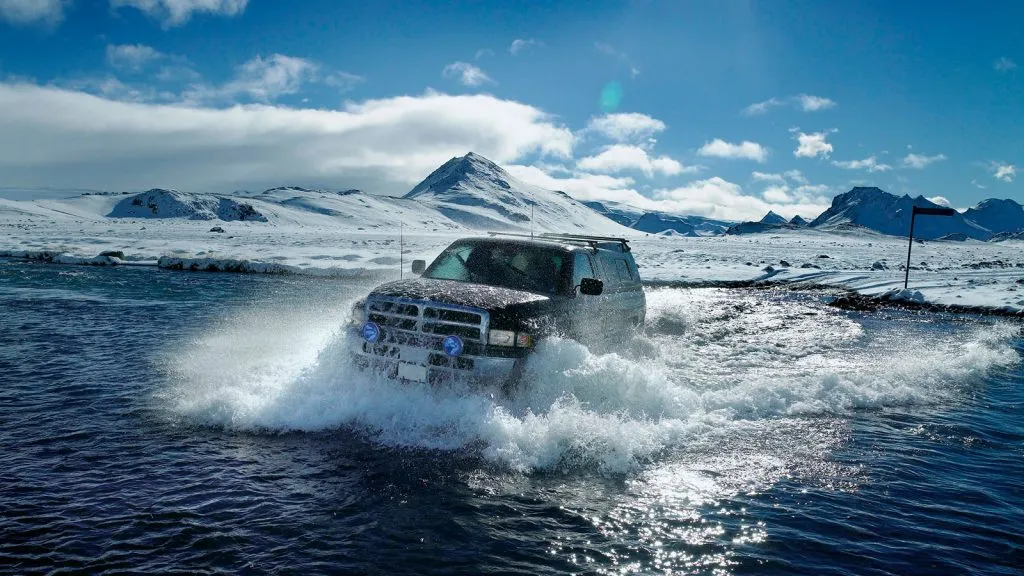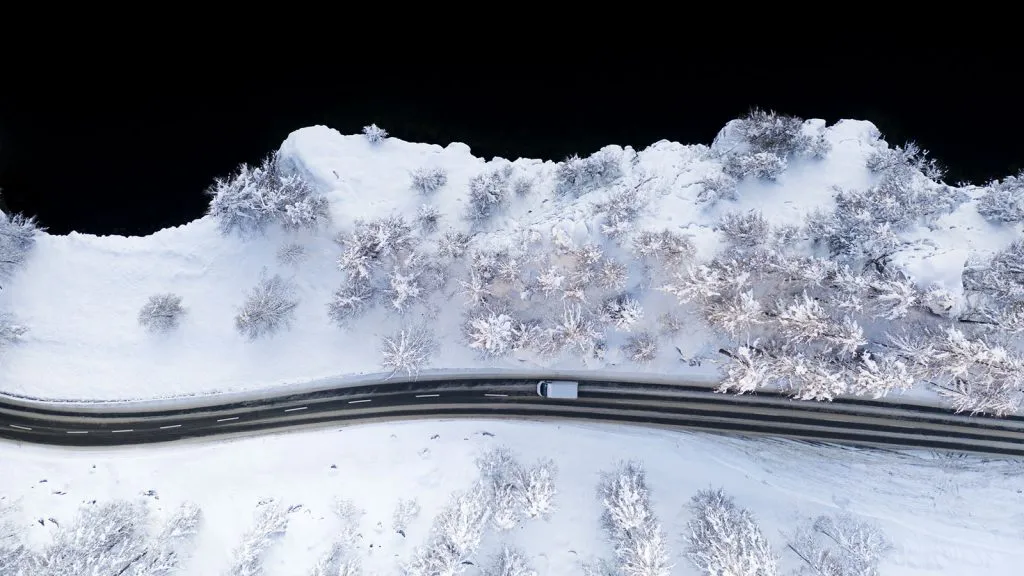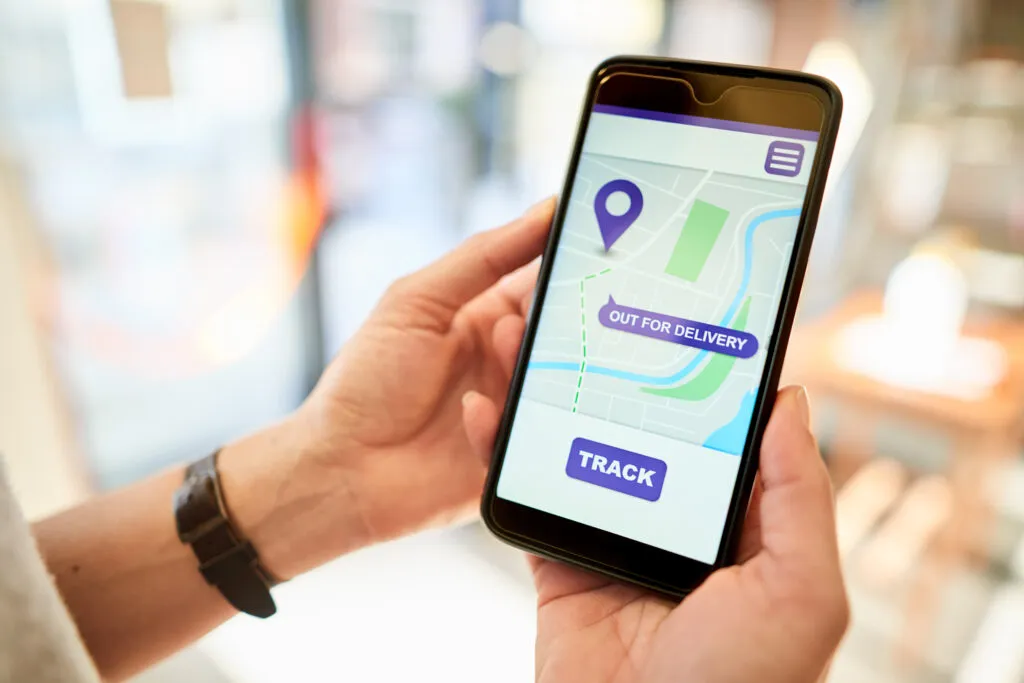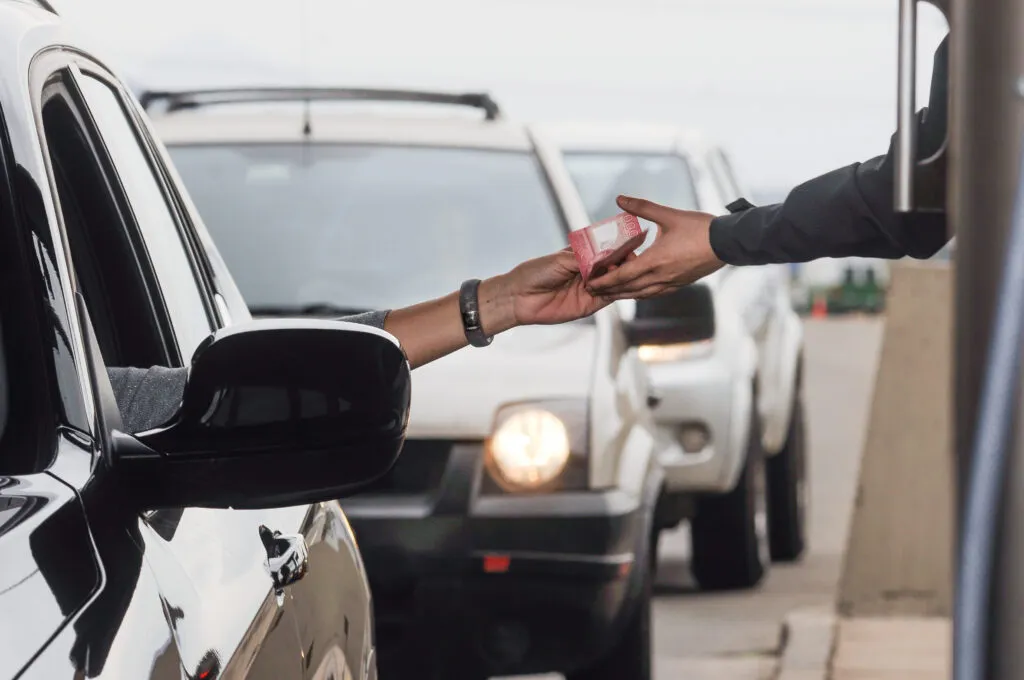
Get home early with RoadWarrior.
Enter your stops, optimize your routes, manage your team – quickly and efficiently.
Try RoadWarrior free for 7 days
Try free for 7 daysYou wake up one morning to find the roads blanketed in a thick carpet of snow. It’s still too early for the snowplows to have gotten around to your small neighborhood, but you have to get to work on time this morning. You’re a little nervous about the commute, but you get in your car and begin your drive anyway.
After a little while with no mishaps, you grow more confident and inch back up to your usual speed. The radio is playing your favorite song, and the traffic conditions have you convinced that you won’t be late. But now you’re traveling down a hill toward a stoplight, and when you apply the brakes, you can feel that something’s wrong. You’re not coming to a smooth stop. Instead, you’re slipping, and now the bumper of the car in front of you is alarmingly close — right before you crash into it.
According to the Federal Highway Administration, an average of 1.2 million vehicle crashes occurred in severe weather between 2007 and 2016, leading to an average of 418,000 injuries, and 5,376 fatalities. Over this period of time, 21 percent of all crashes and 16 percent of fatalities were classified as weather-related. Slippery roads and limited visibility can be dangerous for the most aware drivers, and even more so to those who are drowsy or distracted.
To avoid becoming another statistic, there are some common errors you should know so you can steer clear of them. In this article, we’ll go over the top mistakes people make while driving in the snow.
6: Thinking Your Four-wheel Drive Makes You Invincible

While vehicles with four-wheel drive typically do perform better in snowy and icy driving conditions, the technology can backfire by giving drivers a false sense of safety.
Four-wheel drive is used to send the specific amount of needed torque to each of your car’s four tires to give it added traction to move forward through snowy roads. That doesn’t mean, however, that you can race down the road at top speed in the snow and bring yourself to a quick stop. Four-wheel or all-wheel drive isn’t going to give you the traction you need to brake. It can help you get through some difficult conditions, but it doesn’t make you Superman.
5: Not Being Prepared
Many drivers find themselves caught off guard during the winter’s first snow. In fact, the most dangerous day to be on the roads is the day after the first snowstorm [source: Elliott]. Drivers haven’t prepared their cars for the wintry weather, and they’ve probably forgotten their snow driving techniques from last year.
To ready your car for the winter, check that each of your tires has at least a 6/32-inch (4.8-millimeter) deep tread. All-weather tires can handle most driving conditions, but if you live in an area that gets a lot of snow, you should consider purchasing snow tires. The deeper treads on winter tires allow them to dig into snow and provide increased traction while both accelerating and braking. On the other hand, summer performance tires should never be used to drive through snow, and should even be kept out of heavy rain when possible [source: Continental Tires].
When the winter months come around, regularly check your antifreeze levels and battery power and make sure that your defroster and rear window defogger work. As far as the inside of your car goes, purchase a snow shovel and cat litter or sand for digging yourself out of a jam and giving your vehicle traction. Flares, a flashlight and a snow scraper should also be kept in your car. You may also want to keep tire chains as a last resort. Using chains, however, is discouraged in many states because they cause extra wear to road surfaces. Finally, consider signing up for a winter driving class in your area.
4: Following Too Closely

Many people inexperienced with driving in the snow make a bad habit out of tailing the vehicle in front of them too closely. Like driving too fast, this lessens your reaction time if there’s a problem with the vehicle ahead of you and you need to slow down suddenly.
At 60 miles per hour (97 kilometers per hour) the average vehicle takes about 4.6 seconds and 271 feet (83 meters) to come to a complete stop. Throw in snow and icy conditions, and this distance effectively doubles, taking 10.6 seconds and 533 feet (162 meters) [source: Memmer]. In low traction conditions, drivers should allow much more following space for vehicles in front of them and reduce highway speeds. Preferably both at once.
You should also be looking ahead for stop lights, stop signs and curves in the road so you can give yourself adequate time to brake or steer around them.
3: Slamming on the Brakes
When you feel your tires start to slip, it’s easy to panic and slam on the brakes. Don’t do it — this removes traction from your tires, taking away your ability to control your vehicle.
Once you’ve lost traction and your wheels are locked up, slamming your brakes won’t change the situation. What you should do when you feel yourself begin to skid is ease off the accelerator and let the car slow down on its own. A moving tire means that there is still some traction, which is what you need to steer yourself out of a collision.
If braking is required and your vehicle comes with an anti-lock brake system, brake with steady, even pressure. If your car doesn’t have ABS, then you should pump the brakes by quickly braking again and again [source: New York State Department of Motor Vehicles].
When handling snow-covered corners, you should begin a steady braking as you approach the turn. Once in the corner, ease off the brakes and use the car’s remaining traction to steer through the turn. Also avoid stopping on steep inclines. With limited traction, the added force of gravity will not be your friend. The vehicle can become stuck in place, or even start rolling downhill while trying to accelerate.
2: Not Looking Out for Ice

While snow and ice often accompany one another, the thick, white powder is much easier to spot. Thin sheets of black ice present many of the same dangers as snow, but can easily sneak up on an inattentive driver. Ice can appear on the road surface when there is very little snow on the ground, or no snow at all. All it takes is for temperatures to dip below freezing for a few hours, and leftover rainwater or runoff will turn the road into a hazard.
In the colder months of the year, you should be prepared for a possible loss of traction, even if you live in a state that doesn’t typically get much snow. Ice is most likely to collect where water pools at the bottom of hills. Roads that get little traffic at night also have more of a chance to become frozen. Since bridges are exposed to air and constructed with metal, they can freeze over much faster than tarmac alone. So be double-cautious on overpasses.
If you do encounter a patch of ice, the rules are much the same as driving in snow. Maintain momentum deliberately without sudden movements. If braking, do so lightly to avoid locking up the wheels. Panic-stopping will lead to more loss of vehicle control.
1: Driving Too Fast
Driving too fast is the biggest snow driving error [source: Dunlop]. Drivers have a bad habit of thinking that once they’ve reached the highway they’re fine to drive at their usual high speed. Wrong.
When your car starts to slip and you’re heading for a crash, every second counts. Driving too fast reduces the amount of time you have to react and increases the severity of any collision. Since reaction times double in low-traction environments, you’ll want to accelerate and brake with all possible caution and care.
You should slow your speed when the temperature is close to freezing and sleet and snow have begun to fall. Remember that there’s no right speed zone to be traveling in when it’s snowing, so you need to pay close attention to the road conditions and how your car is handling to gauge a safe speed.
Drive In Snow FAQ
While four-wheel drive can be very helpful for snowy driving conditions, the technology can give a false sense of safety. It gives a specific amount of needed torque to each of your car’s tires, providing added traction to move forward through snowy roads. But this doesn’t mean that you should speed or drive any less carefully.
It is recommended to keep your drive in the first or second gear on snowy or icy surfaces. A lower gear makes your car move slowly, giving the tires more power and traction for a safe drive.
A vehicle’s speed is the most important factor when it comes to driving in snow. There’s no “correct” speed, so use your best judgment and go extra slow, even if you feel silly.
How much snow you can drive in really depends on the vehicle you’re driving. Driving in six or more inches is not a problem if you have a vehicle with big snow tires. With keen attention to road conditions and good-quality snow tires, you can safely drive in four inches of snow.
When a car starts sliding, people often panic and slam on the brakes. However, this decreases your tires’ traction, making you lose control. Instead, ease off the gas pedal, avoid oversteering and gently turn your wheel into the slide.
High Performance on Ice
To get hands-on experience in snow, you may want to consider taking classes at the Bridgestone Winter Driving School in Colorado. They offer a variety of courses to teach drivers accident avoidance techniques in a low-traction, but controlled environment.
Content written by Talon Homer and created in partnership with HowStuffWorks.com


